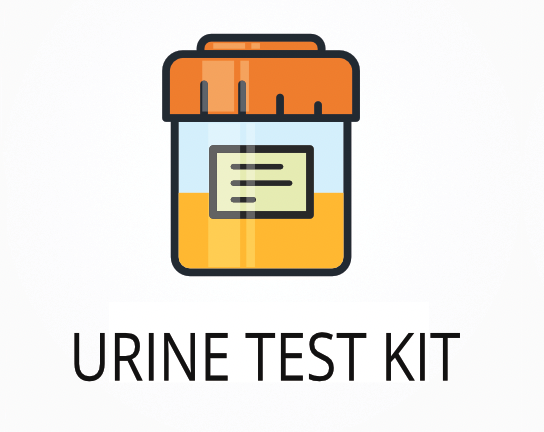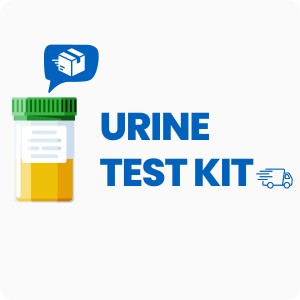Ordering the Organix Organic Acid Test | Advanced | Canada
The Organix Organic Acid Test by Genova Diagnostics measures over 40 organic acids in urine, providing a detailed look at how your body breaks down nutrients, produces energy, and manages toxins. This test can help pinpoint metabolic imbalances, nutrient deficiencies, and issues with gut bacteria or yeast that may be linked to symptoms like fatigue, mood changes, or digestive discomfort. Interestingly, this test can also detect subtle changes in mitochondrial function, which may not show up in standard blood work.
Ordering this test gives you a clear picture of your body’s metabolic activity and nutrient needs. Here are some specific benefits of ordering:
- Identifies nutrient deficiencies, such as B vitamins, that may affect energy and mood
- Detects imbalances in gut bacteria and yeast that can impact digestion and immune response
- Assesses markers of oxidative stress, which can contribute to inflammation and joint pain
- Evaluates detoxification pathways, helping to uncover reasons for headaches or skin issues
- Measures neurotransmitter metabolites, offering insight into focus, concentration, and sleep patterns
Who Should Consider Advanced Metabolic and Organic Acid Testing
People who experience ongoing tiredness, trouble focusing, or unexplained digestive problems may benefit from this test. For example, someone who has tried different diets and supplements but still feels run down and struggles with brain fog could use this test to find out if hidden metabolic or nutrient issues are at play.
Ordering may also be helpful in these situations:
- Persistent joint pain or muscle aches without a clear cause
- Frequent headaches or migraines that don’t respond to typical treatments
- Unexplained skin rashes or acne that flare up despite good skincare
- Difficulty losing weight even with regular exercise and balanced meals
- Children with behavioral changes or learning difficulties, as metabolic imbalances can sometimes affect mood and attention
This test provides measurable data on how your body processes nutrients, manages toxins, and supports energy production, which can help guide targeted changes in diet or supplements. Delaying this test may allow metabolic imbalances to persist, making it harder to address symptoms like fatigue or poor concentration over time. Take the next step to get clear answers by ordering today.
How to Prepare for Metabolic and Nutrient Marker Testing
Fasting is not required for this urine-based test, but it’s best to collect the sample first thing in the morning. Always follow any instructions your doctor or healthcare provider gives you to make sure your sample is collected correctly and your results are as useful as possible.
Labs Included When Ordering Your Organix Organic Acid Test
| Test Name | Reference Range | What This Marker Means | Low and High Levels of Organix Organic Acid Test |
|---|---|---|---|
| Fatty Acid Metabolism | |||
| Adipate | 0.00–0.07 | Adipate is a byproduct of fat breakdown. It helps show how well your body is processing and using fats for energy. | High levels mean your body may not be breaking down fats efficiently.
Low levels mean normal fat metabolism or low fat intake. |
| Suberate | 0.00–0.13 | Suberate is another marker of fat metabolism. It can show if your body is having trouble using certain fats for energy. | High levels mean possible issues with fat breakdown or carnitine deficiency.
Low levels mean efficient fat metabolism or low fat intake. |
| Ethylmalonate | 0.00–0.13 | Ethylmalonate can indicate problems with how your body uses certain amino acids and fats for energy. | High levels mean possible issues with fat or amino acid metabolism.
Low levels mean normal metabolism of these nutrients. |
| Carbohydrate Metabolism | |||
| L-Lactate | 0.00–6.00 | L-Lactate is produced when your body breaks down sugars for energy, especially when oxygen is low. | High levels mean possible issues with sugar metabolism or low oxygen.
Low levels mean normal sugar breakdown. |
| Pyruvate | 0.00–0.13 | Pyruvate is a key step in turning food into energy. It helps show how well your body is using carbohydrates. | High levels mean possible blockages in energy production.
Low levels mean normal carbohydrate metabolism. |
| Beta-Hydroxybutyrate | 0.00–0.13 | Beta-Hydroxybutyrate is a ketone body, showing how your body uses fat for energy when sugar is low. | High levels mean increased fat burning or possible diabetes.
Low levels mean low fat burning or high carbohydrate intake. |
| Energy Production | |||
| Citrate | 0.00–0.50 | Citrate is part of the citric acid cycle, which is how your body makes energy from food. | High levels mean possible blockages in energy production.
Low levels mean reduced energy output. |
| cis-Aconitate | 0.00–0.13 | cis-Aconitate is another step in the energy cycle, showing how well your body turns food into usable energy. | High levels mean possible energy cycle blockages.
Low levels mean normal energy production. |
| Fumarate | 0.00–0.13 | Fumarate is a marker for how well your body completes the energy cycle in cells. | High levels mean possible mitochondrial dysfunction.
Low levels mean normal energy cycle function. |
| Isocitrate | 0.00–0.13 | Isocitrate is another energy cycle marker, helping to show if your cells are making energy efficiently. | High levels mean possible blockages in energy production.
Low levels mean normal energy cycle activity. |
| Alpha-Ketoglutarate | 0.00–0.13 | Alpha-Ketoglutarate is important for both energy production and detoxification in the body. | High levels mean possible issues with energy production or detoxification.
Low levels mean normal function. |
| Succinate | 0.00–0.13 | Succinate is a key part of the energy cycle, showing how well your cells are making energy. | High levels mean possible mitochondrial dysfunction.
Low levels mean normal energy production. |
| Malate | 0.00–0.13 | Malate is another energy cycle marker, helping to show if your body is making energy efficiently. | High levels mean possible blockages in energy production.
Low levels mean normal energy cycle function. |
| Hydroxymethylglutarate | 0.00–0.13 | Hydroxymethylglutarate is involved in making cholesterol and energy in the body. | High levels mean possible issues with cholesterol or energy production.
Low levels mean normal metabolism. |
| B Vitamin Markers | |||
| Alpha-Ketoisovalerate | 0.00–0.13 | Alpha-Ketoisovalerate helps show if your body is getting enough B vitamins, especially B6. | High levels mean possible B6 deficiency.
Low levels mean normal B6 status. |
| Beta-Hydroxyisovalerate | 0.00–0.13 | Beta-Hydroxyisovalerate is another marker for B vitamin status, especially B7 (biotin). | High levels mean possible biotin deficiency.
Low levels mean normal biotin status. |
| Alpha-Ketoisocaproate | 0.00–0.13 | Alpha-Ketoisocaproate helps show if your body is using B vitamins properly for energy and muscle function. | High levels mean possible B6 deficiency.
Low levels mean normal B6 status. |
| Alpha-Keto-Beta-Methylvalerate | 0.00–0.13 | Alpha-Keto-Beta-Methylvalerate is another marker for B vitamin status, especially B6. | High levels mean possible B6 deficiency.
Low levels mean normal B6 status. |
| Xanthurenate | 0.00–0.13 | Xanthurenate is a marker for vitamin B6 status and tryptophan metabolism. | High levels mean possible B6 deficiency.
Low levels mean normal B6 status. |
| Methylation Markers | |||
| Methylmalonate | 0.00–0.40 | Methylmalonate is a marker for vitamin B12 status and methylation, which is important for energy and brain function. | High levels mean possible B12 deficiency.
Low levels mean normal B12 status. |
| Formiminoglutamate | 0.00–0.13 | Formiminoglutamate is a marker for folate (B9) status and methylation. | High levels mean possible folate deficiency.
Low levels mean normal folate status. |
| Neurotransmitter Metabolism | |||
| Vanilmandelate | 0.00–6.00 | Vanilmandelate is a breakdown product of adrenaline and noradrenaline, showing how your body manages stress hormones. | High levels mean increased stress hormone breakdown.
Low levels mean low stress hormone activity. |
| Quinolinate | 0.00–0.13 | Quinolinate is a marker for brain inflammation and tryptophan metabolism. | High levels mean possible brain inflammation or immune activation.
Low levels mean normal tryptophan metabolism. |
| Homovanillate | 0.00–6.00 | Homovanillate is a breakdown product of dopamine, important for mood and focus. | High levels mean increased dopamine breakdown.
Low levels mean low dopamine activity. |
| 5-hydroxyindoleacetate | 0.00–6.00 | 5-hydroxyindoleacetate is a breakdown product of serotonin, which affects mood and sleep. | High levels mean increased serotonin breakdown.
Low levels mean low serotonin activity. |
| Kynurenate | 0.00–0.13 | Kynurenate is a marker for tryptophan metabolism and brain health. | High levels mean possible brain inflammation.
Low levels mean normal tryptophan metabolism. |
| Picolinate | 0.00–0.13 | Picolinate is involved in tryptophan metabolism and can affect mood and immune function. | High levels mean increased tryptophan breakdown.
Low levels mean normal tryptophan metabolism. |
| Antioxidant Markers | |||
| p-Hydroxyphenyllactate | 0.00–0.13 | p-Hydroxyphenyllactate is a marker for antioxidant status and oxidative stress in the body. | High levels mean increased oxidative stress.
Low levels mean normal antioxidant function. |
| 8-Hydroxy-2′-deoxyguanosine | 0.00–0.13 | 8-Hydroxy-2′-deoxyguanosine is a marker for DNA damage from oxidative stress. | High levels mean increased DNA damage.
Low levels mean low oxidative stress. |
| Detoxification Indicators | |||
| 2-Methylhippurate | 0.00–0.13 | 2-Methylhippurate is a marker for detoxification of certain chemicals and environmental toxins. | High levels mean increased exposure to chemicals.
Low levels mean low exposure or normal detoxification. |
| Orotate | 0.00–0.13 | Orotate is involved in detoxification and can show how well your body is processing waste products. | High levels mean possible detoxification issues.
Low levels mean normal detoxification. |
| Glucarate | 0.00–0.13 | Glucarate helps show how well your body is removing toxins and hormones. | High levels mean increased detoxification activity.
Low levels mean low detoxification activity. |
| Alpha-Hydroxybutyrate | 0.00–0.13 | Alpha-Hydroxybutyrate is a marker for detoxification and can show if your body is under stress from toxins. | High levels mean increased detoxification demand.
Low levels mean normal detoxification. |
| Pyroglutamate | 0.00–0.13 | Pyroglutamate is involved in glutathione metabolism, which is important for detoxification and antioxidant defense. | High levels mean possible glutathione depletion.
Low levels mean normal glutathione status. |
| Sulfate | 0.00–0.13 | Sulfate is a marker for detoxification and helps show how well your body is processing toxins. | High levels mean increased detoxification activity.
Low levels mean low detoxification activity. |
| Bacterial-General | |||
| Benzoate | 0.00–0.13 | Benzoate is a marker for gut bacteria activity and detoxification. | High levels mean increased gut bacteria activity or exposure to preservatives.
Low levels mean normal gut bacteria activity. |
| Hippurate | 0.00–0.13 | Hippurate is a marker for gut bacteria and detoxification of certain foods and chemicals. | High levels mean increased gut bacteria activity.
Low levels mean low gut bacteria activity. |
| Phenylacetate | 0.00–0.13 | Phenylacetate is a marker for protein breakdown and gut bacteria activity. | High levels mean increased protein breakdown or gut bacteria activity.
Low levels mean normal protein metabolism. |
| Phenylpropionate | 0.00–0.13 | Phenylpropionate is another marker for gut bacteria and protein metabolism. | High levels mean increased gut bacteria activity.
Low levels mean normal gut bacteria activity. |
| p-Hydroxybenzoate | 0.00–0.13 | p-Hydroxybenzoate is a marker for gut bacteria and exposure to certain preservatives. | High levels mean increased gut bacteria activity or preservative exposure.
Low levels mean normal gut bacteria activity. |
| p-Hydroxyphenylacetate | 0.00–0.13 | p-Hydroxyphenylacetate is a marker for gut bacteria and protein metabolism. | High levels mean increased gut bacteria activity.
Low levels mean normal gut bacteria activity. |
| Indican | 0.00–0.13 | Indican is a marker for protein breakdown by gut bacteria. | High levels mean increased protein breakdown by gut bacteria.
Low levels mean normal protein metabolism. |
| Tricarballylate | 0.00–0.13 | Tricarballylate is a marker for certain gut bacteria activity. | High levels mean increased activity of specific gut bacteria.
Low levels mean normal gut bacteria activity. |
| L. Acidophilus (Probiotic) | |||
| D-Lactate | 0.00–0.13 | D-Lactate is produced by certain gut bacteria, including probiotics like L. acidophilus. | High levels mean increased probiotic or bacterial activity.
Low levels mean normal probiotic activity. |
| Clostridial Species | |||
| 3,4 Dihydroxyphenylpropionate | 0.00–0.13 | This marker shows activity of certain Clostridia bacteria in the gut. | High levels mean increased Clostridia activity.
Low levels mean normal Clostridia activity. |
| Yeast/Fungal | |||
| D-Arabinitol | 0.00–0.13 | D-Arabinitol is a marker for yeast and fungal overgrowth in the gut. | High levels mean increased yeast or fungal activity.
Low levels mean normal yeast levels. |
| Creatinine | Varies by age/sex | Creatinine is used to correct for urine concentration and is not a diagnostic marker itself. | High levels mean concentrated urine.
Low levels mean dilute urine. |
Reference ranges may change slightly as labs update their methods or as new research becomes available. Always review your results with a qualified healthcare provider for the most accurate interpretation.
Organix Organic Acid Test FAQ
Is there Organix Organic Acid Test testing near me?
This is a home test kit that you can collect locally, and you can check the draw location link for more details. For people dealing with ongoing fatigue or digestive issues, having a convenient collection option means you can get tested quickly without extra travel or waiting, making it easier to address symptoms sooner.
How do I interpret the test results?
While your treating physician should always review your results, we also offer a one-on-one test results review with our clinical team to help you understand your results and what steps to take next.
What is the cost of the test?
The price listed for this test includes standard shipping to you and return shipping to the lab, though draw fees may apply. Ordering this test can help you find the root cause of symptoms like low energy or poor focus, so you can start targeted changes and feel better faster.
How often should I retest?
Retesting is usually recommended every 6 to 12 months, especially if you are making changes to your diet or supplements based on your results. Regular retesting helps track improvements in nutrient status, gut health, and energy production, so you can adjust your plan as needed.
How accurate is the test?
This test uses advanced gas chromatography-mass spectrometry (GC-MS) to measure organic acids in urine, with a specificity of 98% and sensitivity of 97%. TrueHealthLabs.com partners with CLIA-certified and CAP-certified laboratories to uphold rigorous testing standards for dependable results.
Important Notes
- You are responsible for any cost of return shipping.
Medical Review Board
Reviewed by Jeff Donohue M.D. from Body Logic and Brady Hurst DC, CCCN. Written by True Health Lab’s team of editorial health contributors.
Disclaimer: This information is for educational purposes only and not intended as medical advice. Consult your healthcare provider for personalized guidance.
Why Customers Trust True Health Labs – What People are saying
Also rated 4.6 out of 5 based on 3452 ShopperApproved reviews- See all TrueHealthLabs.com reviews.











